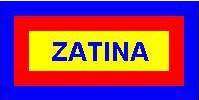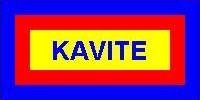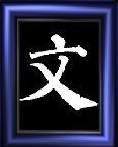CONFUSING NAMES (20 march 2004)

Any idea how this brand-name is remembered by Chinese people who don't know English?
Quite simple - they often count the strokes by which the name is written. For instance, the letter K is drawn in three strokes and the letter I in one. So the name ZATINA is remembered as having 15 strokes.
And suppose the next time this Chinese came across the following word:

Yes indeed, the chances are big that he (or she) would think it's the same brand-name.
You might think this is a little far-fetched, but suppose you saw these Chinese characters, how would you decide they are the same if you saw them again?
But first something about the way in which we recognize names, or things in general.
Recognizing faces
Suppose you are white and, just as an example, say you were robbed by a black person. If the police showed you the following three portraits, the chance is not imaginary that you would point to the person on the right as being the one who robbed you - although I'm sure this man is no robber at all.



People tend to remember very general information about a face they see for only a short time.
Experiment
You may have heard of the following experiment: in the street, a woman asks the way. After a few seconds the two people are temporarily separated by a piece of board, which is - rudely - being carried right between them. But as the two people are temporarily separated, the woman who was asking the way is replaced by another one. So when the board moves away, the friendly passer-by faces another woman.
This experiment was repeated with several people. Afterwards they were asked if they had noticed anything special. In many cases people had not noticed the woman's replacement.
It is clear that people remember words and faces by a limited number of characteristics.
Names in a novel
Knowing how poorly our memory performs, isn't it asking for trouble when a novelist uses a huge number of names?
The other day, I read Gone, But Not Forgotten , a novel by Phillip Margolin. In the first fifty pages the writer introduces forty-five names:
- Alfred Neff
- Betsy (Elizabeth) Tannenbaum
- Walter Korn
- Andrea Hammermill
- Sidney Hammermill
- Randy Highsmith
- Martin Darius
- Michael Graves
- Larry Prescott
- Alan Page
- Russ Miller
- Vicky (Victoria) Miller
- Frank Valcroft
- Stuart Webb
- Austin Forbes
- Francis Colby
- Kelly Bendelow
- Raymond Francis Colby
- Ellen Colby
- Mabel Hutchings
- Howard Colby
- Alfred Gustafson
- Tina Page
- William Tobias
- Winona
- Reiser
- Farrar
- Morales
- Kathy Tannenbaum
- Rick Tannenbaum
- Greig
- Maxine
- Donovan
- Wayne Turner
- Nancy Gordon
- Frank
- Bundy
- Manson
- Dahmer
- Frank Grimsbo
- Michaels
- Melody Lake
- Sandra Lake
- Daley
- Peter Lake
Can you imagine Margolin loses some of his readers with such an abundance of names?
That things can be done quite differently is demonstrated by two other writers mentioned in earlier weblogs:
- Ed McBain's novels of the 87th Precinct always take place in the same setting. In this way his readers don't have to learn a list of detectives with every new book. Besides, McBain's detectives have clearly different backgrounds and names, like SteveCarella, Cotton Hawes, Bert Kling and 'Fat' Ollie Weeks.
- In his novel Sea Change, Robert Goddard also uses an enormous number of names. But he is friendly enough to include an index with all the names of the characters in the book.
The Chinese characters again
One last question: you remember the two Chinese characters from the top of this text?

Yes, you have seen two Chinese characters indeed ... but are you sure it was these two? I'm afraid only the one on the right is the same as the one at the beginning. These two characters here mean script and day, whereas the left one at the beginning meant sky.
Which demonstrates (amongst other things) that as far as our memory is concerned, we are no computers.
(with my thanks to Li Pan, Canada)